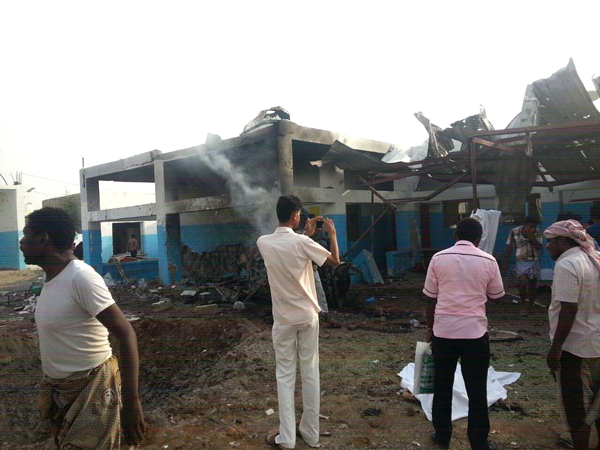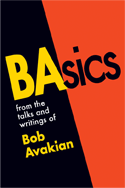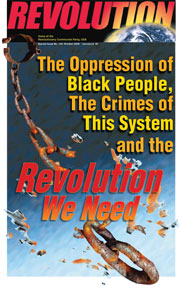Why Do Some War Crimes (in Syria) Get More Coverage Than Others (in Yemen)?
The New York Times “Interpreter” Explains It... Away
October 10, 2016 | Revolution Newspaper | revcom.us
Here’s a question for you: Why do some wars—like Syria—get more coverage in the U.S. media than others—like Yemen?
The American press is full of Syria coverage: not a day goes by without another gut-wrenching description of life under siege in what’s left of the city of Aleppo and stern denunciations of the savage crimes carried out by Russian and Syrian government warplanes, such as bombing hospitals and reducing whole neighborhoods to rubble. Pictures of wounded Syrian children go viral, some of their tweets get global media coverage.
Yet there’s another savage war going on 1,300 miles south of Syria that doesn’t get anywhere near the coverage. This one is in Yemen, where Saudi Arabia’s air force is flying U.S.-made planes, being guided by U.S. intelligence, and dropping U.S.-made bombs—on hospitals and reducing whole neighborhoods to rubble. But we don’t hear nearly as much about that one, or see many pictures of wounded or dead Yemeni children.
Call In the Propaganda Cavalry: The New York Times “Interpreter”!
Perhaps this coverage disparity is raising troubling questions about the media’s role, including among New York Times readers, as well as deeper questions about some key props of this system’s legitimacy overall: the notion that America is a force for good in the world in general, and the global champion of humanitarianism in particular.
Time for the propaganda cavalry! Call in the New York Times “Interpreter” (yes, that’s the name of this feature)! According to this venerated pillar of “objective” reporting, why some wars get covered and others don’t is rather vexing, complicated and somewhat mysterious. But thank god the “Interpreter” was able to break down this perplexing phenomenon in its October 2 installment, “Why Some Wars (Like Syria’s) Get More Attention Than Others (Like Yemen’s).”
“A Compelling Story Line”: Syria Is Hell! Yemen, eh, Not So Much
The “Interpreter” identifies a number of factors that explain why Syria is getting a lot of coverage and Yemen not nearly as much. Key overall, a good story lie, excuse me, line: “Conflicts gain sustained American attention only when they provide a compelling story line that appeals to both the public and political actors....”
But why is Syria such a “compelling story line,” while Yemen isn’t, according to the Times? One is the amount of suffering: “Some of the reasons are obvious; the scale of Syria’s war is catastrophic and much worse than Yemen’s.” Later, the “Interpreter” adds, “Yemen’s death toll is lower than Syria’s.”
Say what?! Yes, the Syrian people are suffering through a catastrophic nightmare caused by reactionaries on all sides. But what do you call it when 14 million people—half the country’s population—is suffering malnutrition thanks largely to the war Saudi Arabia started in March 2015? Or when a Red Cross official stated last year—when conditions were not nearly as dire as they are now, “Yemen after five months looks like Syria after five years.” Or when a country—Yemen!—is listed as a Level 3 humanitarian crisis—the same level as Syria and Iraq—and may be on the brink of famine?
When humanitarian deliveries of food, medicine and other needed supplies are cut off to the Syrian city of Aleppo, there’s an international hue and cry. But Saudi Arabia is cutting off the delivery of food, medicine and other needed supplies to most of Yemen, including by bombing ports and bridges, with barely a word of international outrage!
What, none of that qualifies as a “catastrophe” in the eyes of the New York Times “Interpreter”?

On August 15, Saudi planes bombed the Doctors Without Borders run Abs Hospital compound in northern Yemen. At least 19 were killed, including three Yemeni members of Doctors Without Borders (also known as MSF). Dozens more were wounded, including three foreign doctors. (Photo: MSF)
As for numbers killed, at last count at least 10,000 Yemeni civilians have been killed or injured in the year and a half since Saudi Arabia started dropping U.S.-made bombs. How many Yemenis have to be dead or wounded for the New York Times to find it a “compelling” news story?
“Clearly Identifiable Good Guys and Bad Guys”
Oh, but there are other criteria that come into play. What’s needed to ensure coverage, the “Interpreter” tells us, is “an emotionally engaging frame of clearly identifiable good guys and bad guys.” Syria “offers a compelling tale of innocent victims and dastardly villains”—including Russia, the Assad regime, and ISIS. But poor Yemen, “There is no obvious good-versus-evil story to tell there: The country is being torn apart by a variety of warring factions on the ground and pummeled from the air by Saudi Arabia, an American ally. There is no camera-ready villain for Americans to root against.”
You’ve got to be fucking kidding! What, Saudi Arabia, a reactionary medieval kingdom where beheadings are routine and whose global record of spreading reaction and terror make the butcher Assad look like a bit player, isn’t a “camera-ready villain”?
We could go on all night about this kingdom’s “camera-ready” crimes, but let’s stick to Yemen for now. One of the wealthiest kingdoms in the world savagely bombs, blockades and destroys one of the poorest countries. On one day, August 13, Saudi bombs hit the home of a school principal in northern Yemen, killing his wife and four of their children. Then, as is standard Saudi operating procedure, a second airstrike killed more of the principal’s relatives while rescuers were trying to free them. At the same time, the Saudis bombed a school, killing 10 children and injuring 28 more. When rescuers brought survivors to a Doctors Without Borders-sponsored hospital, they were asked to leave because the Saudis systematically target hospitals for bombing. What’s not “camera-ready” and “compelling” about that villainy?
Or, how about an even more “camera-ready villain”—America! It piously parades around the world as the arbiter of “human rights,” while providing Saudi Arabia $20 billion worth of weapons since the war began, including internationally banned anti-personnel cluster bombs and possibly white phosphorous weapons that burn right through flesh to the bone, for use against Yemen’s hospitals and children. The “Interpreter” acknowledges (as it must to maintain any credibility) that Saudi airstrikes “are killing civilians and targeting hospitals and aid workers,” but whitewashes the U.S. role with the concluding phrase, “at times with United States support.” At times? Which times haven’t had U.S. support? Saudi Arabia’s air force couldn’t even get off the ground without U.S. technical and other support (a point the New York Times has made in its coverage). Even after these crimes have been exposed the Obama administration decided to send another $1.15 billion in arms to the butchers of Riyadh.
(The New York Times has editorialized against U.S. support for Saudi Arabia: “America Is Complicit in the Carnage in Yemen” (August 17), criticizing U.S. actions in Yemen as “indefensible,” which it ascribes to the need to “mollify” Saudi Arabia “after the nuclear deal with Iran,” i.e., the U.S. is being forced to do so by the Saudis. But the New York Times does not condemn the U.S. for its actions in Yemen, much less its motives and essential character. Compare this to its September 29 excoriation of Russia’s Vladimir Putin. Titled “Mr. Putin’s Outlaw State,” it condemns him for violating “common human decency,” engaging in “unconscionable behavior,” “butchering civilians,” and showing “his true colors” by bombing hospitals.)
Read the American Crime series here
And how about this for villainy. The world’s dominant global power, which claims to be completely against reactionary fundamentalist jihadists, secretly backs them, including with TOW missiles, and encourages its allies to do likewise in order to topple the Assad regime in Syria. Why? To defeat Russian moves in the region and weaken Iran, another regional adversary. All this fuels and drags out the reactionary civil war in Syria, contributing mightily to the staggering tolls of 470,000 dead and 11 million driven from their homes. All the while, this power acts like it’s an innocent bystander, and the slaughter is entirely someone else’s fault. This “narrative” is echoed and amplified—overtly and in more nuanced forms—by its so-called “free press.” One example, the New York Times editorial blasting Russia’s intervention in Syria declared that in contrast to Putin: “President Obama has long refused to approve direct military intervention in Syria.” Oh, really? The 5,433 air attacks the U.S. has carried out in Syria since 2014 (a year before Russia intervened militarily) don’t constitute “direct military intervention”? All this while such a power is also directly abetting and facilitating war crimes in Yemen.
How’s that for duplicitous “villainy” on a global scale?
What Actually Puts U.S. “Interests at Risk”?
There are moments you think just maybe the “Interpreter” is going to tell a little truth when U.S. interests are mentioned as something that shapes the coverage. Nope. Another deliberate mind-fuck:
As far as Syria goes, the “[Mis] Interpreter” says: “The war is now putting United States’ interests at risk, including the lives of its citizens, giving Americans a direct stake in it. The Islamic State has murdered American hostages and committed terrorist attacks in the West.”
As for Yemen, “although Al Qaeda does operate there, Yemen’s conflict has not had the kind of impact on American and European interests that Syria’s has.... Yemen’s Houthi rebels pose little direct threat that American politicians might rally against.”
So without directly saying so, America’s interests get spun as “direct threats” to the homeland, and protecting American lives.
But what are “American interests” actually, and why is the slaughter in Syria suddenly a “direct threat” to those interests? The U.S. stance toward Syria has never been about potential attacks on the U.S. It’s been about trying to maintain its domination of the region and making sure Russia, Iran, and Assad don’t gain ground—even if that means half a million people die and the conflict and chaos stokes Islamic jihadists who launch attacks in the U.S. This is why the U.S. has been content to let the killing drag on for years. But now when their rival Russia is making gains, the Assad regime may survive and the whole nightmare may strengthen Iran, then it’s “Whoa! We’ve got to cover this and prepare public opinion, if we decide we need to jump more deeply into these bloody waters.”
Meanwhile, the slaughter in Yemen is NOT a direct threat simply because this does NOT threaten, but serves U.S. interests by bolstering its key client-ally Saudi Arabia and prevents any possible gain by Iran.
“Americans often seem so inward-looking as to be almost provincial”
And where would any “interpretation” of U.S. news coverage be without blaming the audience: “Americans often seem so inward-looking as to be almost provincial,” The “Interpreter” notes, and America’s “inattention” to the world is “the default, not the exception.”
Wow, who knew bullshit could be so serious, multilayered and yes, deep, as in up-to-your-waist deep?
Let’s start with this: Who in the hell trained people in this country to think that only American lives counted? Memo to New York Times and its “Interpreter”: You know the drill—you invented it!: thousands of people die in some catastrophe and the first question is, were any Americans killed? How does this affect America?... Now let’s parrot what some representative of imperialism has to say about America’s role in the world and what it’s nefarious, no-good enemies, who lack any modicum of human decency, are up to.
Just think about how Hurricane Matthew has been covered. There’s been 24-hour, wall-to-wall coverage of its impact on the U.S. before, during and after the hurricane. Meanwhile, the hurricane hit Haiti, which was already suffering far, far more, much harder: hundreds killed and staggering devastation. Yet Haiti received a small fraction of the coverage.
No wonder most Americans couldn’t find Syria or Yemen on a map, and don’t know Yemen from Yakima.
Of course, maybe more people would have known something about Yemen if the United States government and “antiwar” President Barack Obama hadn’t blocked a UN inquiry into Saudi war crimes, which would have generated worldwide publicity. But somehow this tidbit didn’t find its way into the “Interpreter” less-than-compelling storyline.
And let’s be real here: There are readers of the New York Times who probably consider themselves very well-informed, who should know better but have been [mis-]educated and stupefied by the New York Times, and allow themselves to take refuge in the turgid swamp of “complexity”—rather than breaking out in bitter, derisive laughter at wading through the convoluted mix of lies and double-talk modeled in “Why Some Wars (Like Syria’s) Get More Attention Than Others (Like Yemen’s)”—and see clearly and act on their moral responsibility to humanity to oppose America’s enormous crimes around the world.
So, the U.S. rulers and their lapdog media have lied to us about Syria and Yemen. Now they’re lying to us about how they’ve lied to us. But then that makes sense. What does a habitual liar do when caught in a lie? Make up another one.
So it turns out there IS a “camera-ready villain for Americans to root against.” U.S. imperialism and its media accomplices!
Volunteers Needed... for revcom.us and Revolution
If you like this article, subscribe, donate to and sustain Revolution newspaper.









